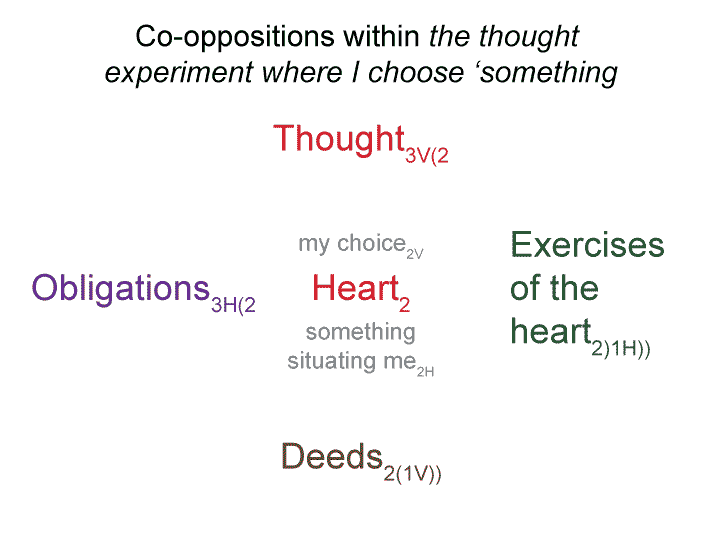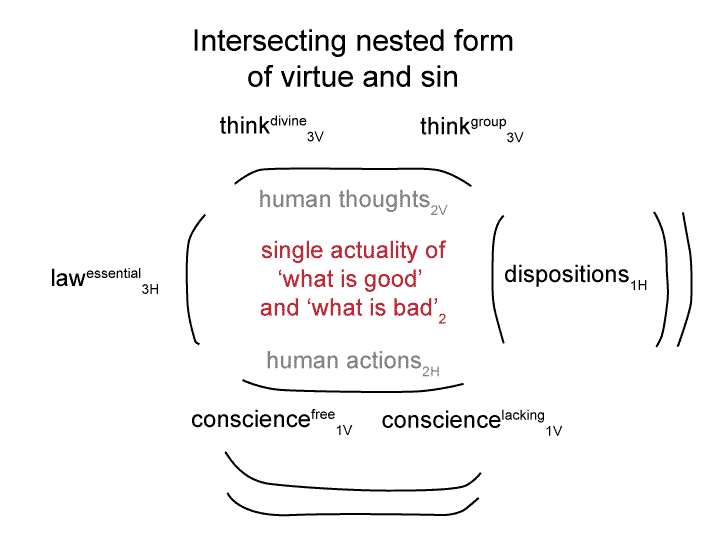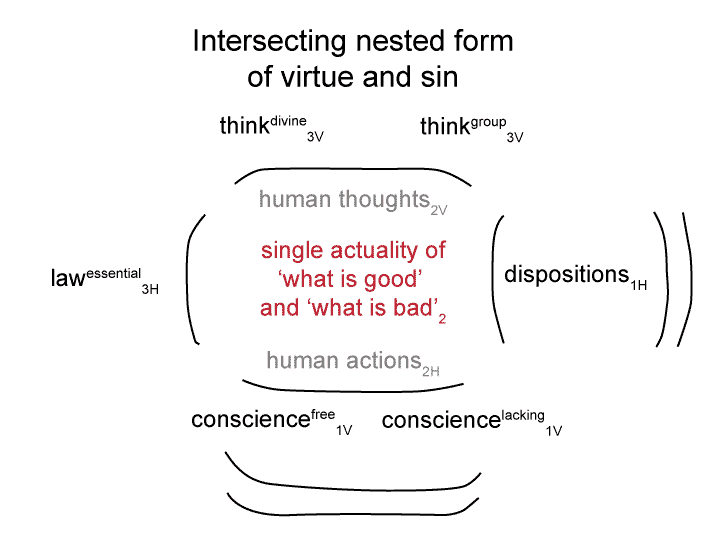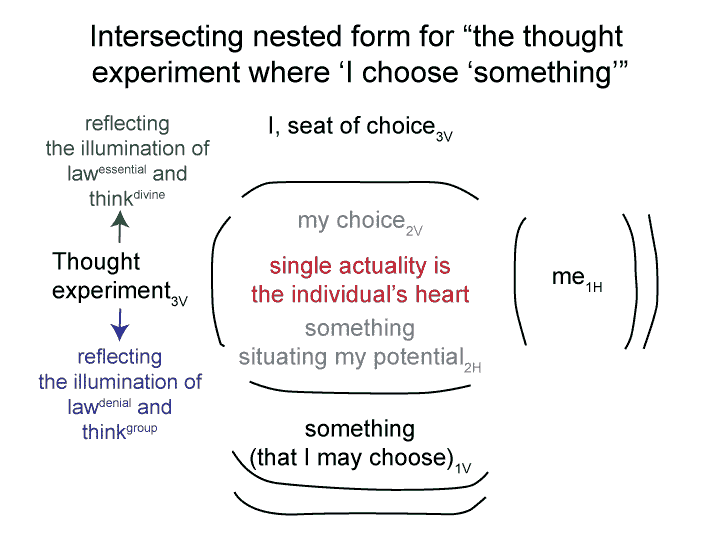Category Archives: Defining Religion
Man and Sin by Piet Schoonenberg (1964) 2.3 TQ
[Despite the inadequate wording, what a resonance imply?
Maybe, what is good and what is bad2( free will1V)) complements heart2(free will1V)).
Would this fit Schoonenberg’s claim that free will becomes liberty when deeds are bound to God and becomes servitude when deeds are bound to sin, law or death?]
Man and Sin by Piet Schoonenberg (1964) 2.3 TP
Summary of text [comment] pages 83 and 84
[I compare the intersecting forms of the thought experiment where I choose ‘something’ and the message underlying the word “religion”.
I find that something that I may choose1V parallels consciencespecified1V.
I feel that I should label this parallel: Free will.
Perhaps the word “parallels” is insufficient.
How about complements or resonates with?]
Man and Sin by Piet Schoonenberg (1964) 2.3 TO
[Free will, consciencespecified1V, points to ideas inside of me.
From this potential, ‘what is good and what is bad2’ emerges. This actuality points to the world outside of me.]
Man and Sin by Piet Schoonenberg (1964) 2.3 TA
[If I can compare this nested form to the one derived from ‘the thought experiment where ‘I choose ‘something’‘ …
… then consciencespecified1V matches something1V in the potentials inherent in something that I may choose1V.
Something1V corresponds to value1V.]
Man and Sin by Piet Schoonenberg (1964) 2.3 SY
Summary of text [comment] pages 83 and 84
[What is the categorical nature of this term “free will”?
Consciencefree and conscienceunfree appear as competing potentials in the intersecting nested form that describes the message underlying the word, “religion”.
To me, these seem to correspond to the label “free will”.]
Man and Sin by Piet Schoonenberg (1964) 2.3 SK
[The thought experiment where ‘I choose ‘something’ serves as a categorical tool for investigating Schoonenberg’s passage on responsibility and freedom.
What Schoonenberg expressed, the text itself, stands within the shell of Modernism.
What Schoonenberg was required to express as a Jesuit theologian included the husk of pre-modern Scholasticism.
Perhaps, only by dying in the cryptotheology of Modernism (with its complete fixation on the realm of actuality) and by cracking the coat of pre-modern Scholasticism (with its reliance on signs, without knowing ‘what signs are’), could this text germinate into an exercise in postmodern Scholasticism.]




